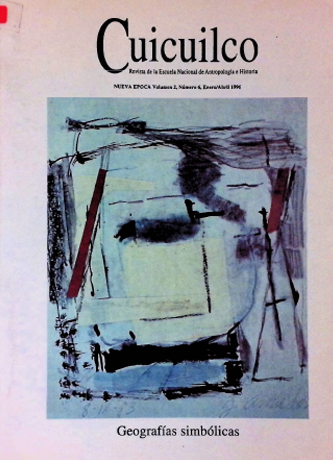Dossier
Published 2023-11-13
Keywords
- Antropología,
- Lingüística,
- Geografía
Copyright (c) 1996 Instituto Nacional de Antropología e Historia

This work is licensed under a Creative Commons Attribution-NonCommercial 4.0 International License.
How to Cite
Concepción y estructuración lingüística del tiempo y el espacio. (2023). Cuicuilco Revista De Ciencias Antropológicas, 2(6), 15-28. https://revistas.inah.gob.mx/index.php/cuicuilco/article/view/20137
Abstract
-
Downloads
Download data is not yet available.
References
- Bemard Comrie, Tense, Cambridge University Press, Cambridge, Nueva York, Melboume,1985.
- Julio Cezar Melatti, Los indios del Brasil, SEP-SETENTAS, México, 1973.
- Gunter Senft, Everything We Always Thought We Knew about Space but Did not Bother to Question, Cognitive Anthropology Research Group at the Max Planck Institute for Psycholinguistics, Nijmwngen, 1992.
- Liliane Lurçal, El niño y el espacio, Fondo de Cultura Económica, México, 1979.
- Stephen R. Anderson y Eward L. Keenan, «Deixis», en Thimoty Shopen (ed.), Language Typology and Syntactic Description, vol. 3, Cambridge University Press, Cambridge, Nueva York, Melbourne, 1985.
- Franz Boas, «The Central Eskimo», en Sixth Annual Report of the Bureau of Ethnology Washington, D.C., 1888.
- E. Carpenter, F. Valey y R. Flaherty, Eskimo, University of Toronto Press, Toronto, 1959.
- C. R. Hallpike, Fundamentos del pensamiento primitivo, Fondo de Cultura Económica México, 1986.
- John B. Haviland, Anchoring, Iconicity, and Orientation in Guugu Yimidhirr Pointing Gestures, Cognitive Anthropology Research Group at the Max Plank Instituto of Psycholinguistics, Nijmegen, 1972.
- Stephen C. Levinston, Languageand Cognition; The Cognitive Consequences ofSpatial Description in Guugu Yimidhirr, Cognitive Anthropology Research Groupe at the Max PIank Instituto for Psycholinguistics, Nijmegen, 1992.

